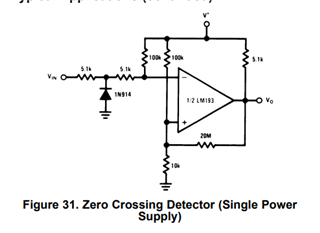Other Parts Discussed in Thread: LM193, TLV3201, TLV2371, LM311, LM111, SN6505B, OPA381
Please explain the following circuits. Why are resistors chosen the way they are chosen? one of the circuit has a pull-up and the other doesn't. Kindly cover that point also in explanation.




